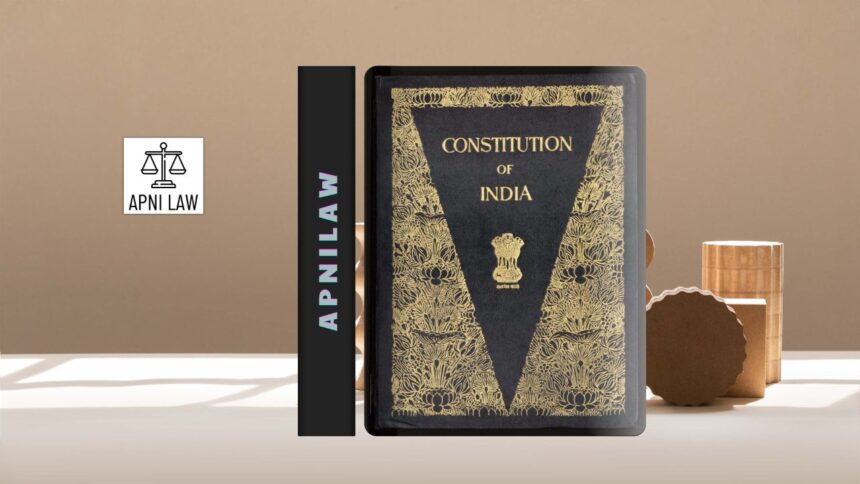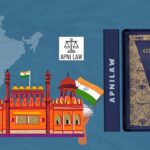What Do Articles 343–351 of the Indian Constitution Deal With?
Articles 343 – 351 form Part XVII of the Indian Constitution, laying down the complete framework for official languages in India. These provisions ensure a balance between national unity and linguistic diversity. They define the official language of the Union, recognize State languages, and provide for language commissions. They also give education in mother tongue, and protection of linguistic minorities.
India’s multilingual nature required a constitutional design that promotes Hindi while respecting all other Indian languages. The framers adopted a bilingual policy, recognizing Hindi in Devanagari script as the Union’s official language and allowing English to continue for administrative and legal purposes.
What Is the Official Language of the Union Under Article 343?
Article 343(1) declares Hindi in Devanagari script as the official language of the Union of India. This provision establishes Hindi as the primary medium for official communication at the national level.
However, Article 343(2) allowed English to continue for official purposes for 15 years from the date the Constitution came into effect in 1950. This transitional arrangement aimed to help States and institutions gradually adapt to Hindi.
Later, Article 343(3) empowered Parliament to continue the use of English for as long as needed. This power was exercised through the Official Languages Act, 1963, which made English a permanent associate official language along with Hindi. This dual-language policy remains in effect today.
How Does Article 344 Promote the Use of Hindi?
Article 344 provides for the establishment of a Commission and a Parliamentary Committee to review and recommend measures for promoting Hindi. The Commission examines progress in adopting Hindi for official use and advises on the balance between Hindi and English.
The Parliamentary Committee includes members from both Houses of Parliament. It ensures that the transition towards wider use of Hindi is gradual, practical, and does not disrupt communication between the Union and States.
What Do Articles 345 to 347 Say About State Languages?
Article 345 gives each State Legislature the power to adopt any language in use. This is within the State or Hindi as its official language. Until a State enacts such a law, English continues to be used for all official purposes.
Article 346 governs communication between States and between States and the Union. It mandates that the official language of the Union, i.e., Hindi, be used for inter-State communication. However, if both States agree, any other language can also be used.
Article 347 empowers the President to recognize any other language for official use. This is in a State if a substantial portion of the population demands it. This provision ensures cultural inclusion and linguistic representation in administration.
How Is the Language of the Judiciary and Laws Defined Under Article 348?
Article 348 states that, unless Parliament provides otherwise, the language of the Supreme Court, High Courts, and bills or acts shall be English. This ensures uniformity and clarity in legal proceedings and legislation across India.
Although Hindi and regional languages are encouraged, English continues as the authoritative language for judgments, legal documents, and statutes. This is essential to maintain consistency in the country’s judicial system.
Why Is the President’s Sanction Needed Under Article 349?
Article 349 requires the President’s prior approval before introducing any bill or amendment related to the official language policy. This safeguard prevents frequent changes in language laws and maintains stability in administrative communication.
It ensures that any major linguistic change considers national interests and does not adversely affect inter-State or Union-State relations.
How Does Article 350 Protect Language Rights in Administration?
Article 350 provides that every person can submit grievances or petitions to the authorities in any officially recognized language. This article ensures equal opportunity for citizens to communicate with the government without facing language barriers.
It strengthens India’s democratic structure by protecting linguistic minorities and promoting inclusivity in administration.
How Does Article 350A Ensure Education in the Mother Tongue?
Article 350A directs every State and local authority to provide facilities for primary education in the mother tongue of children belonging to linguistic minority groups. This promotes cultural preservation and enhances learning efficiency among children.
The article reinforces India’s policy of protecting linguistic diversity and ensuring that no child is deprived of education due to a language barrier.
Who Protects Linguistic Minorities Under Article 350B?
Article 350B provides for the appointment of a Special Officer for Linguistic Minorities. This officer is appointed by the President of India to monitor and report on the implementation of constitutional safeguards for linguistic minorities.
The officer submits periodic reports to the President, which are then presented before Parliament. This mechanism ensures that linguistic minorities are protected and their rights are enforced across States.
What Is the Objective of Article 351?
Article 351 directs the Union Government to promote the spread of Hindi and develop it as a means of expression for India’s composite culture. It instructs the Union to enrich Hindi by assimilating words and styles from Sanskrit and other Indian languages.
This article emphasizes linguistic unity while encouraging inclusivity. It seeks to make Hindi capable of expressing all forms of modern thought and knowledge without undermining other Indian languages.
What Are the Eighth Schedule Languages?
The Eighth Schedule of the Constitution lists 22 officially recognized languages of India. These are Hindi, Bengali, Telugu, Marathi, Tamil, Urdu, Gujarati, Malayalam, Kannada, Odia, Punjabi, Assamese, Maithili, Santali, Kashmiri, Nepali, Sindhi, Konkani, Dogri, Manipuri, Bodo, and Sanskrit.
Languages included in the Eighth Schedule are entitled to representation on the Official Language Commission and are eligible for development by the government. The inclusion of these languages reflects India’s rich linguistic and cultural diversity.
Why Was the Official Languages Act, 1963 Introduced?
The Official Languages Act, 1963 was enacted to resolve linguistic disputes and extend the use of English for official purposes beyond the 15-year limit mentioned in Article 343.
This Act made English a continuing associate official language alongside Hindi. It also allowed States and the Union to communicate in either Hindi or English. The Act balanced regional sensitivities and maintained administrative convenience across the multilingual Union.
How Do These Articles Promote Unity in Diversity?
The official language provisions of the Constitution aim to unite the nation through language while preserving India’s multilingual character. They encourage the growth of Hindi as a national link language but respect every regional language as a part of India’s identity.
Through Articles 343 to 351, the Constitution ensures that no language is imposed and that communication in governance remains inclusive and practical.
What Is the Legal and Cultural Significance of These Provisions?
Legally, these articles maintain administrative uniformity through the use of Hindi and English in governance, law, and courts. Culturally, they protect India’s linguistic diversity and promote respect for every regional tongue.
They also ensure that linguistic minorities receive education and government services in their own languages, strengthening the federal and democratic character of India.
How Do These Articles Shape India’s Language Policy Today?
Even today, India follows a bilingual policy, Hindi and English serve as the two official languages of the Union. States continue to use their own official languages, and the Eighth Schedule ensures representation of regional languages at the national level.
The government continues to promote Hindi, but also supports translation, digitalization, and education in regional languages. The language policy thus evolves with India’s multilingual and multicultural reality.
For any specific query call at +91 – 8569843472
Conclusion
Articles 343–351 of the Indian Constitution represent India’s effort to maintain unity in linguistic diversity. They establish Hindi in Devanagari as the Union’s official language, preserve English for continuity, and empower States to use their own languages.
By protecting linguistic minorities, promoting education in the mother tongue, and developing regional languages, these provisions strengthen India’s democratic and cultural fabric.
The Constitution’s language policy is a model of inclusivity, promoting Hindi without suppressing other languages, ensuring communication without discrimination, and celebrating India’s multilingual heritage as a source of national strength.








